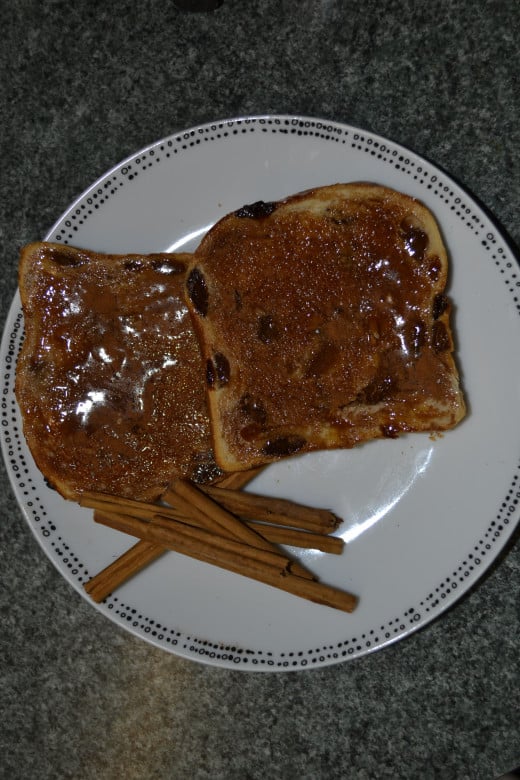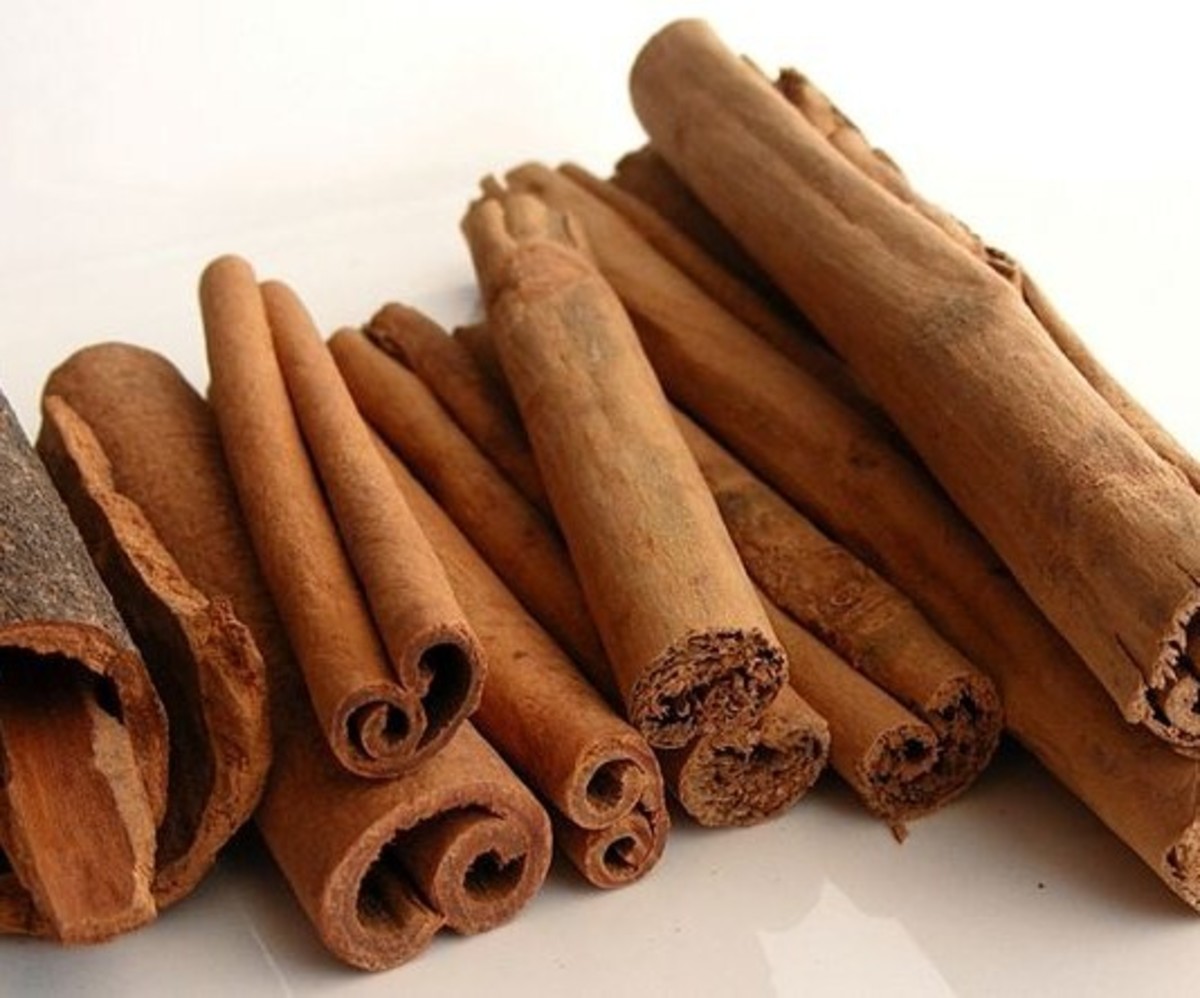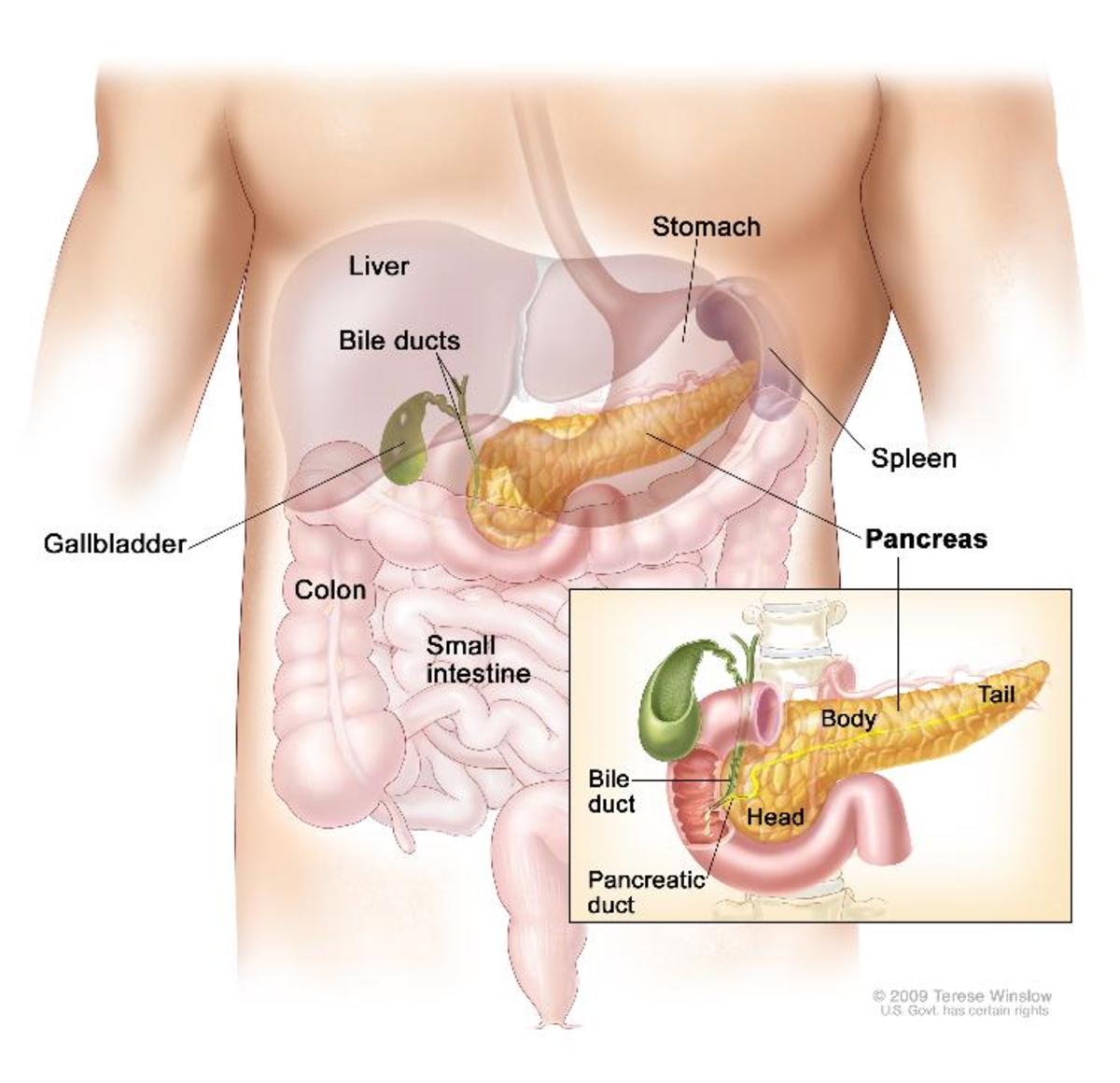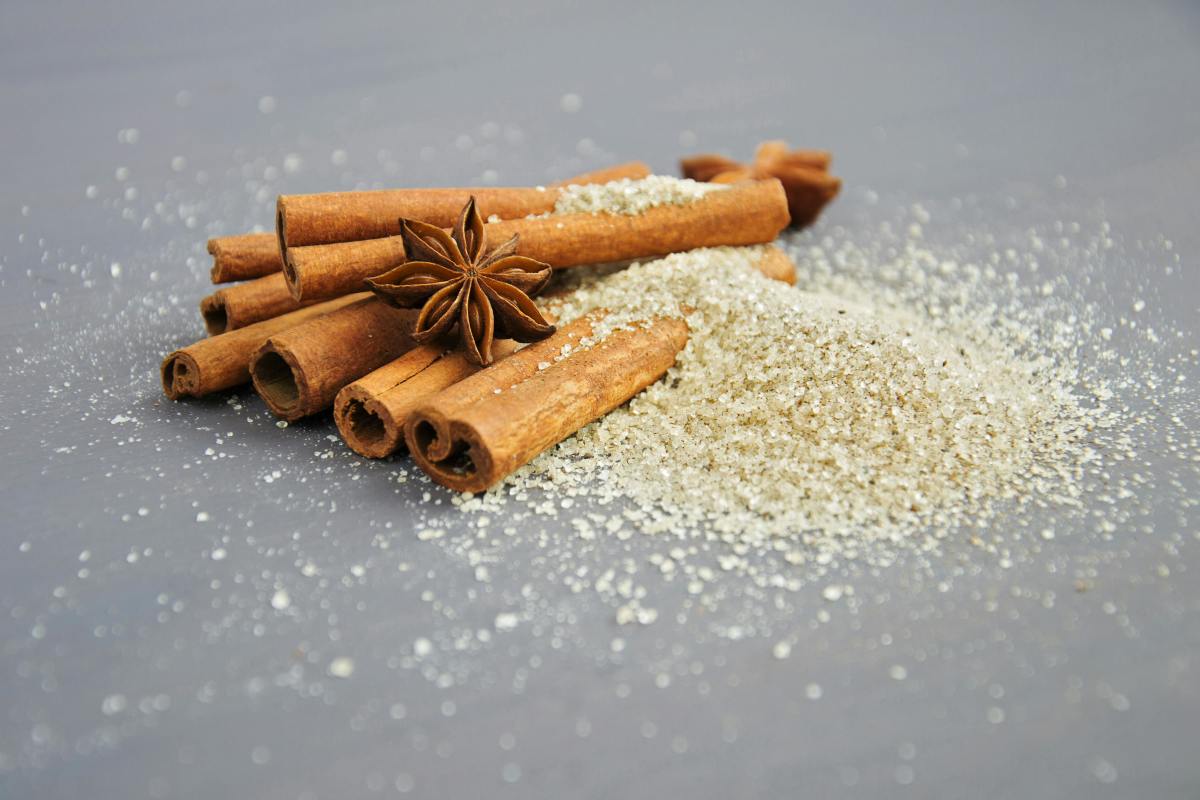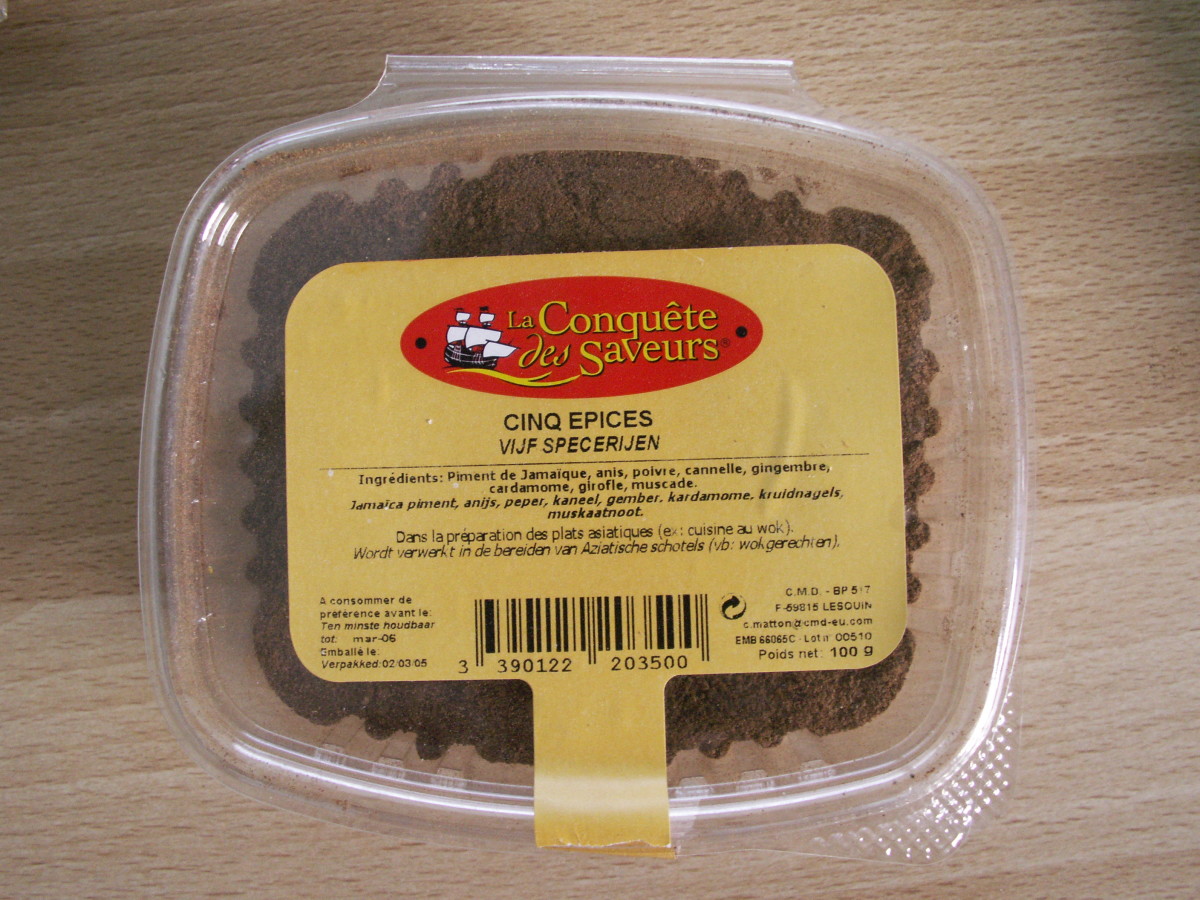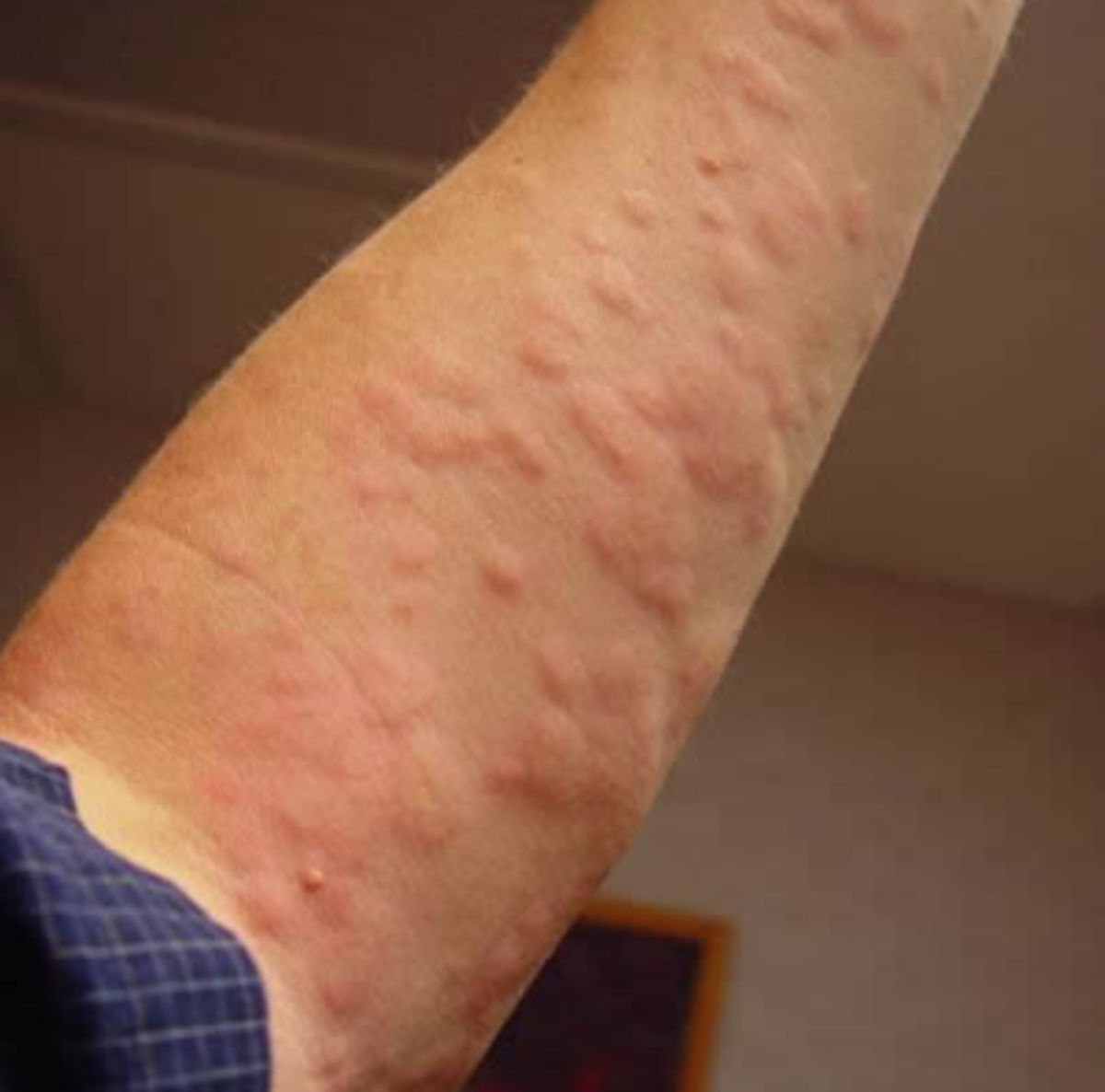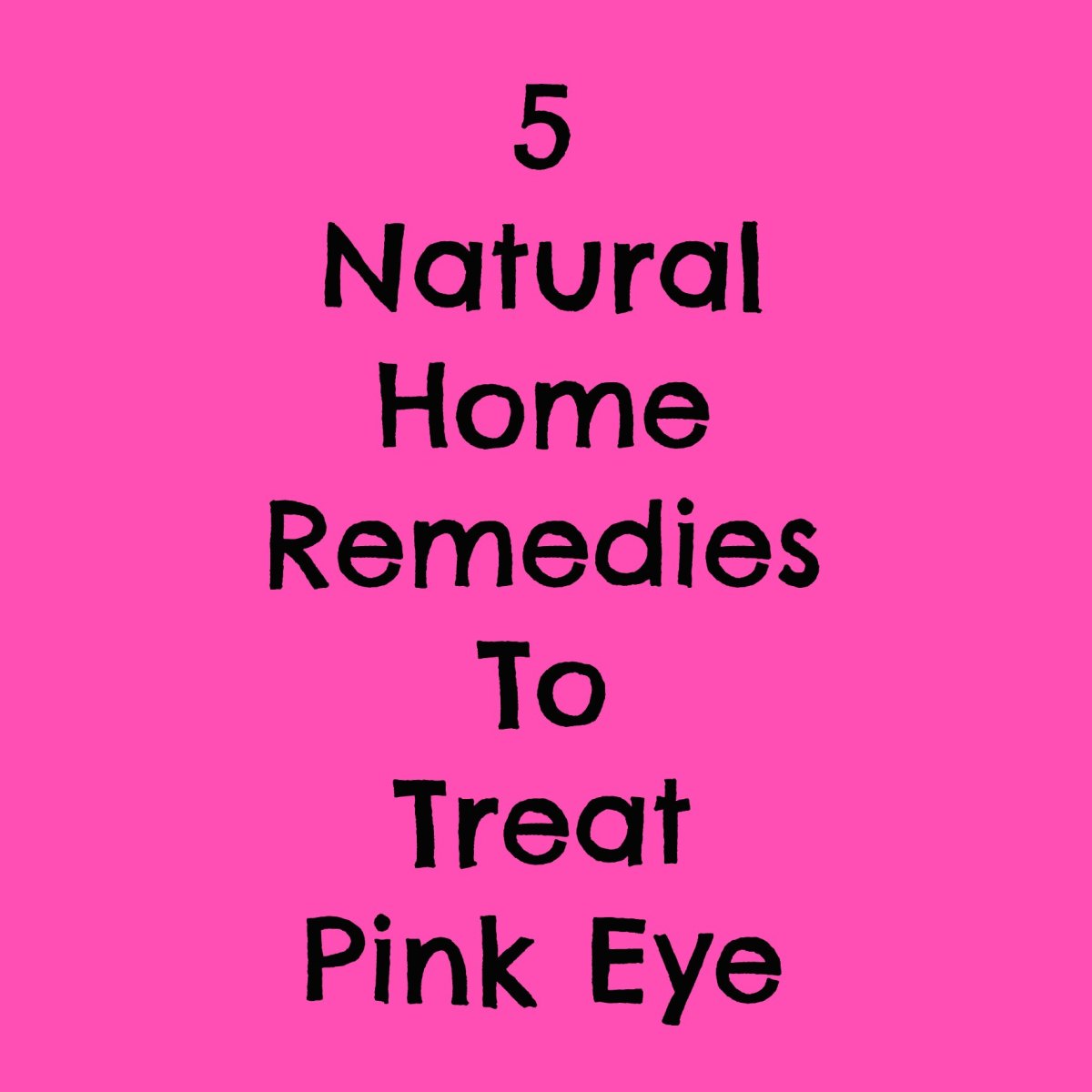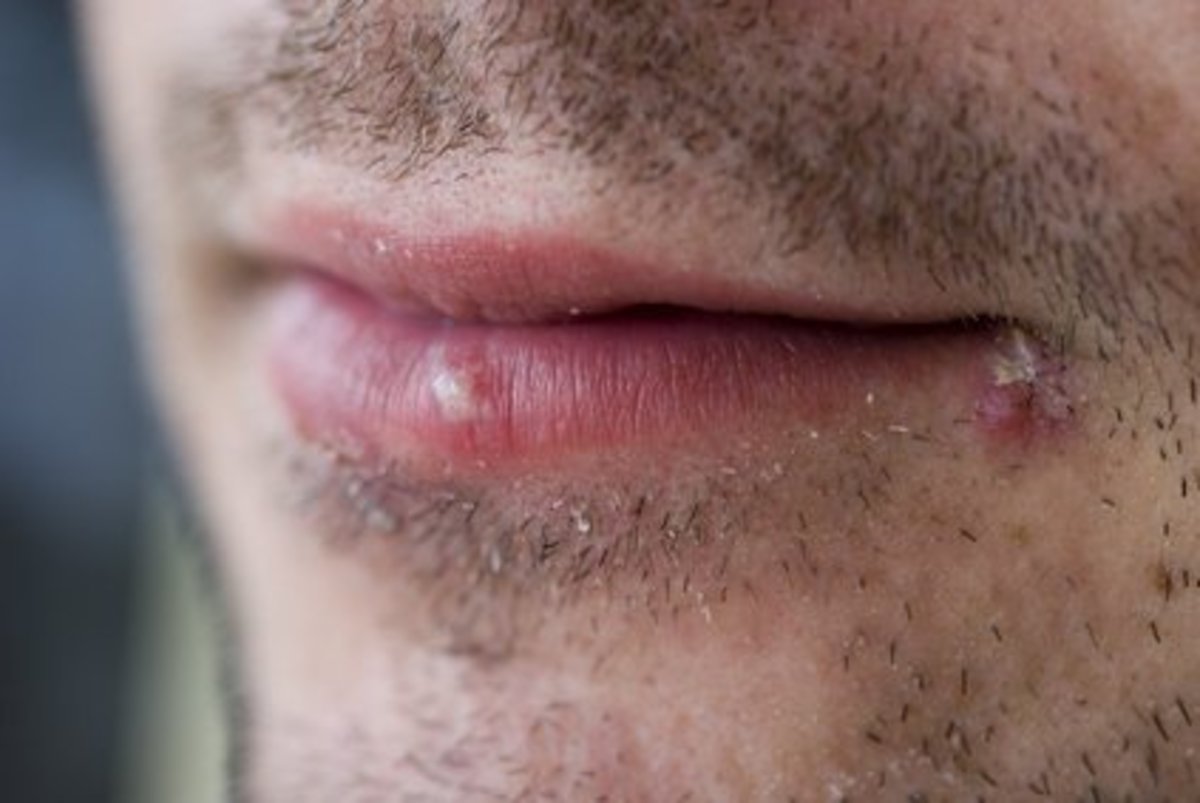Cinnamon and Honey Natural Cures and Health Benefits
Cinnamon and Honey Double The Power
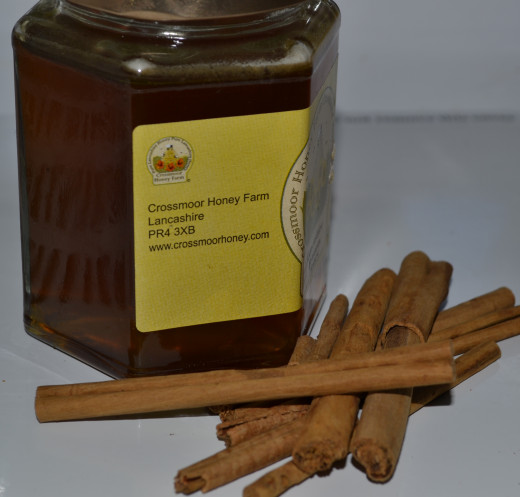
Ceylon Cinnamon on the Left and Indonesian Cinnamon quills.
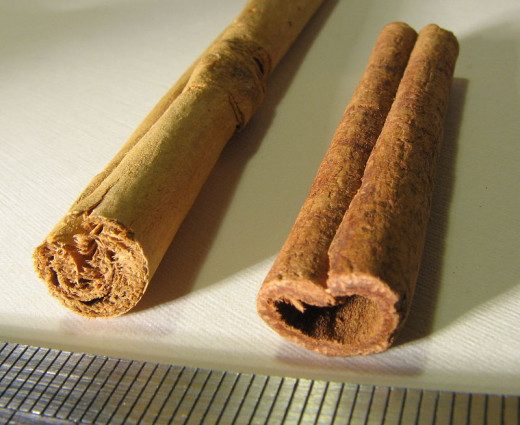
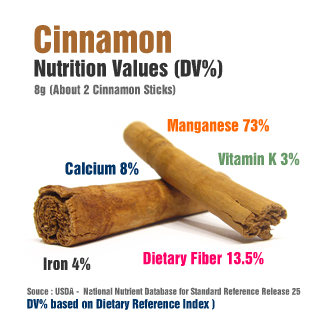
Cinnamon and Honey The Perfect Combinaion?
Cinnamon is an ancient spice often referred to as the spice of life, and indeed, some modern research has shown that there is substance to this claim.
True Cinnamon is relatively cheap, with no known side effects and a good source of non-dairy calcium. Cinnamon helps to regulate blood sugar, reduce A1c levels in people with diabetes, significantly reduce blood pressure, protects against free radical damage, aids fat burning and a powerful antioxidant.
According to Pythagoras, "honey is a food for the gods," endowed with pranic power and rejuvenating properties. The Greek philosopher insisted that honey is used as the principle food for his initiates in his school of philosophy. It is not surprising that this two health enhancing natural remedies would come together to fire the imagination.
Many people now believe that by combining the two superfoods in the right proportion, it is possible to enhance the nutritional benefits.
While the volume of anecdotal evidence in regards to the combined medicinal value of honey/cinnamon is hard to ignore, the individual healing abilities of these two products, have been well documented. Although conclusive scientific evidence on the medicinal value of cinnamon and honey combined, is still lacking, it is well worth exploring.
Cinnamon, A Life Enhancing Spice
Cinnamon is a virtual powerhouse of health promoting properties and well deserving of the status superfood. Polyphenols and Bioflavonoids found in cinnamon are credited with anti-aging properties, a potential cure for numerous ailments and the ability to fight some of the biggest killer diseases of our times.
Research shows that not only do Cinnamon contains potent antioxidants, it also have antibacterial and antifungal properties, making this spice an important potential weapon against some of the most feared diseases such as Alzheimer’s, diabetes, and various types of cancers.
Cinnamon oil has been shown to be effective in the treatment of Tumours, Gastric Cancers and Melanomas. A study also showed good results in the treatment of lymphoma, cervical cancer and colorectal cancers. According to The National Cancer Institute, clinical trials have reached inconsistent conclusions. However, there are also several studies that have found cinnamon to be successful in the treatment of cancer.
In Sri Lanka, formally Ceylon, where the majority of the population consume high levels of Ceylon cinnamon and turmeric in their diet, the rate of cancer was found to be the third lowest when compared to the rest of the world. According to a Pfizer report, rates of cancer in Sri Lanka and India consists of 95-100 per 100,000, compared to rates in the U.S., of 215-410 per 100,000.
Cinnamon is a potent medicinal spice, but when used in conjunction with the natural properties of pure honey, the health benefits are believed to be pretty impressive. To achieve the best results from this two giants of natural remedies, and to avoid adverse side effects, it is imperative that we chose the right spice and honey. The two types of cinnamon most often sold in the West are Ceylon (true cinnamon), and Cassia. While the two may appear similar, the content of active medicinal properties is proportionally different.
What is Cinnamon?
Cinnamon is a pungent spice obtained from the inner bark of branches of some trees belonging to the genus Cinnamomum of the Laurel or Lauraceae family.
Cinnamomum comprises many species including the two most widely used in Europe and the U.S; Ceylon cinnamon grows mainly in Sri Lanka, Cinnamomum Cassia is mostly distributed throughout Asia, Australia and the Caribbean.
Cinnamon contains vital oils and derivatives such as coumarin, cinnamic acid and cinnamaldehyde used in both traditional and modern medicine, and was once considered a panacea in ancient Egypt as far back as 2000 BC. Reference to cinnamon spice is in both the Sanskrit text and the Bible.
Here in the West, we regard this warming sweet spice as a simple form of food flavouring associated with special occasions and holidays. However, since ancient times, cinnamon has been revered as one of the oldest and most potent remedies. The Chinese used cinnamon spice in their medicines for thousands of years; they used the spice as a cure for various conditions including diarrhoea, parasitic worms chills and influenza.
The two types of cinnamon that are most widely used in Europe and the U.S are Ceylon cinnamon and Cassia. However, the cheaper, Cassia is much more readily available, particularly in the U. S. Many people are unable to distinguish between the two, using them interchangeably.
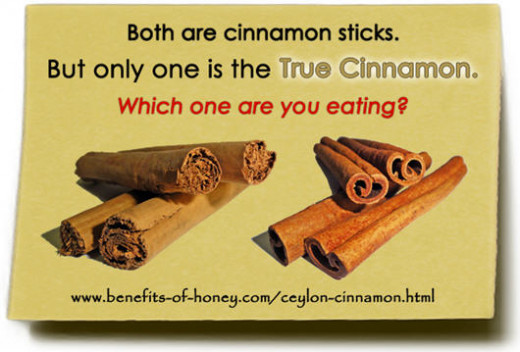
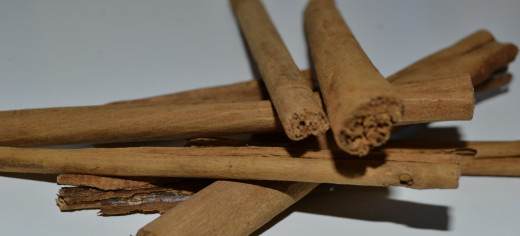
Ceylon Cinnamon
Cinnamomum Verum, also known as Cinnamomum Zeylanicum, Ceylon cinnamon, true cinnamon, is typically more expensive to purchase than its relatives, Cassia, although both spices are of the same genus and family. True cinnamon is softer, breaks easily with little force, unlike cassia. Ceylon Cinnamon is more closely associated with the health benefits attributed to cinnamon with no real adverse effects. This spice contains lower levels of the cinnamon derivative coumarin which can cause liver damage if taken in excess or by sensitive individuals.
Dried Cassia Bark (Saigon Cinnamon)
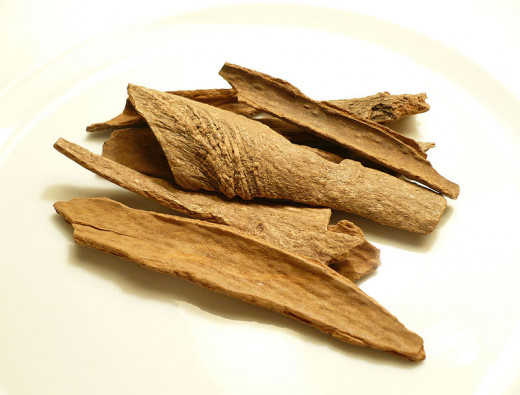
Cinnamomum Cassia
Cassia, like Ceylon cinnamon, consists of many health promoting benefits. However, the properties that make this spice so unique can also cause specific adverse side effects. Cassia contains much higher levels of coumarin in comparison to Ceylon cinnamon and has been shown to be hepatotoxic, can damage the liver.
Pharmaceutical companies use derivatives of Coumarin as anticoagulants. One of the most widely used anticoagulant drugs known as warfarin is a coumarin derivative. Coumarin is used as rat poisoning, UV absorbers, and in the synthesis of certain drugs.
Cinnamaldehyde is the organic compound that gives cinnamon its flavour and aroma, accounting for around 90% of the essential oil of cinnamon bark, and its effectiveness as an antibacterial agent. The antibacterial activity of cinnamon is also useful. Recent research shows that the spice can be an alternative to traditional food preservatives.
Cinnamon lower Mean Glucose Levels
According to a study by the American Diabetes Association, intake of 1, 3, or 6 g of cinnamon per day has been shown to reduce mean fasting serum glucose (18-29%), triglyceride (23-30%) in people with type 2 diabetes. (Alam Khan et al., 2003).
Cinnamon supplements lowered glucose levels in people with type 2 diabetes in a well-controlled study. (Ting Lu et al., 2012). This study looked at 69 Chinese patients, with type 2 diabetes and blood glucose level above recommended targets, e.g. average blood glucose more than 7.0% over the previous two to three months. The study was designed to determine whether cinnamon would lower average blood glucose in people with type 2 diabetes. Participants who took a high dose of cinnamon, lowered their average blood glucose level from 8.9% to 8.0%, while those who received a low dose showed a drop from 8.9% to 8.2%. The mean blood glucose in the placebo group's remained unchanged.
The implication of this study as concluded by the researchers is that cinnamon may be a promising supplement for people with type 2 diabetes. The source of the cinnamon and the means by which it was extracted from the bark could make a difference as far as its effect on blood glucose levels is concerned. These may be the reasons why cinnamon works in some studies and not in others.
The number of people in England aged 16 and over with diabetes, diagnosed, and undiagnosed is expected to climb to 4.6 million by, 2030, with 90% of those affected having type 2 diabetes. 29.1 million people or 9.3% of the U.S., population have diabetes.
Insulin is a primary hormone produced by specialised cells in the pancreas that regulates glucose metabolism. Type 2 diabetes occurs when the body fails to produce sufficient insulin to function properly, or insulin resistance, when the cells of the body do not react to insulin, resulting in a build-up of glucose in the blood.
Diabetes can lead to serious complications and even death, but steps can be taken to reduce the risks and even prevent the condition from developing from pre-diabetes to full-blown diabetes. Cinnamon in conjunction with exercise and a healthy diet may have a role to play.
It may be possible to lessen the impact on blood glucose level by seasoning high carbohydrate food like rice pudding with cinnamon. Researchers found that by adding 1.2 teaspoons of cinnamon to 300 grammes (1.2 cups) of rice pudding the gastric emptying rate was lowered from 37% to 34.5%, and the rise in blood glucose levels significantly lessened. (AM J Clin Nutr. 2007)
"Cinnamic acid derivative shown to be a significantly important substituent as an effective insulin releasing agent in tests." J. Chem Pharm. Res., 2011."
Cinnamon also helps to improve insulin sensitivity in patients with Polycystic Ovary Syndrome, in fact, the spice was shown to have a beneficial effect on essentially all of the factors associated with metabolic syndrome, including insulin sensitivity, glucose, lipids, antioxidants, inflammation, blood pressure and body weight. Also, the beneficial factor linked to related diseases, such as Alzheimer's disease, stroke, and cancer. ( Blevin et al., 2007).
Local Honey Can Help to Prevent Seasonal Allergies
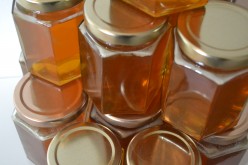
Discover The Many Benefits and Uses of Manuka Honey
Manuka Honey For Natural Health Promation
Honey and Cinnamon, the Combination Factor of the Dynamic Duo
On January 17, 1995, an article was published in a somewhat dubious paper, The Weekly World News, written by Beatrice Dexter about the benefits of combining honey and cinnamon powder to promote health. After the article had been published, an avalanche of anecdotal evidence surfaced in praise of the mutual benefits of honey and cinnamon as a super health enhancer.
Although there is no sound scientific evidence to confirm this, many people believe that by combining this two ingredients a personal can gain twice the benefits.
Since the Beatrice Dexter article, researchers have found that cinnamon is 26% sulphate (sulphur) base, and honey 33%, with an impressive combined sulphur base of 59%. The relevance of the high sulphate content of honey and cinnamon becomes clearer when we look at how sulphur works in the human body.
Sulfur enables the transport of oxygen across cell membranes, and it is present in all cells and forms sulfate compounds with sodium, potassium, magnesium and selenium. Organic sulfur eliminates heavy metals, regenerates, repairs and rebuilds all the cells of the body.
Sulfur is required for the synthesis of glutathione an important endogenous antioxidant that neutralizes free radicals and reactive oxygen compounds and regulates the nitric oxide cycle.
Glutathione is also an important factor in the control of blood pressure and inflammation, it helps the liver to process toxin, and assist in DNA synthesis. Glutathione is a major antioxidant in the human body and an effective weapon used to ward off attacks on the body to maintain health.
Sulfur is a mineral that is vital to our health; it helps the body to resist infection and maintain structure and integrity of connective tissue and the skin.
Cruciferous vegetables rich in sulfur such as broccoli, cabbage, onions, garlic, kale and Brussels sprouts may have anti-cancer effects according to the National Cancer Institute.
Honey Can Crystalize but Never Spoil or Rot
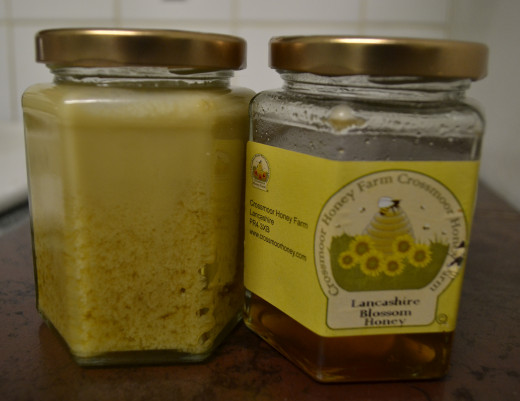
What is Raw Honey
Honey is one of nature's richest superfood sweetener; raw honey contains over 80 different health giving proponents. Living raw, unpasteurized honey is an alkaline-forming food containing numerous amounts of enzymes, antioxidants, vitamins, and other nutrients. In addition, the antibacterial activity of honey makes it an effective treatment for a variety of conditions such as sore throat, indigestion, acne, burn wounds and stomach ulcers.
Honey straight from the hives has been used throughout the world for centuries. The Bible use honey as a metaphor. " A Land of Milk and Honey" in describing the fertile land promised to the chosen people, a land flowing with God's blessings. Prehistoric bees have been busy at work for at least 14 million years. Although no records exist documenting the first time man used honey, the consensus is that we have been consuming honey since the beginning of human existence.
Fossils of honey bees date back 150 million years; the earliest records of beekeeping were found in a 7000 BC cave paintings in Spain. In Greece, Egypt, Rome and India, unprocessed honey was considered a sacred food often made into cakes as gifts for the gods. We know that the Mayans used honey and the Persians used it as a food sweetener.
Raw Honey a Natural Cure
Raw honey contains therapeutic amounts of bee pollen and is considered a top ten superfood revered for its nutritional benefits consisting of complex proteins known as enzymes. The enzyme in honey is destroyed during the heating process, thereby, reducing the medicinal benefits.
Honey consists of predominant enzymes like diastase (amylase), invertase (ɑ-glucosidase) and glucose oxidase. Other enzymes including catalase and acid phosphatase can also be present.
The enzymes content of honey can vary widely according to floral source and region, this plays a significant role in the quality of the honey. Enzymes are responsible for the uniqueness of different honey making it far more complicated than other sweeteners. Pollen granules also known as one of nature's perfect foods are traditionally harvested separately from the honey, but unfiltered honey retains small flecks of pollen, adding to the nutritional quality of raw honey.
Propolis in Honey
Raw honey contains a substance known as propolis, a resin used by bees in the building of hives. The resinous material is used to seal and sterilise the hive from external contamination inhibiting fungal and bacterial growth. Small particles of propolis resin retained in raw honey adding to the value and health benefits.
The medicinal properties of Propolis date back to 350 B.C., to the time of Aristotle, propolis was used by the Greeks to treat abscesses, Assyrians used it for wounds and tumours and the Egyptians, for mummification.
The health benefits of Propolis include:
- Antimicrobial properties
- Antiseptic
- Antioxidant
- Anti-inflammatory
- Immune booster
- Improve liver function
Vitamin and mineral content of Unprocessed honey include:
-
B vitamins
-
Calcium
-
Iron
-
Zinc
-
Potassium
-
Phosphate
-
Silicon
-
Magnesium
-
Copper
-
Chromium
-
Magnesese
-
Selenium
Raw honey v Pasteurised
Commercially bought brands of honey are the refined version of raw honey that has been processed, filtered and pasteurised to maintain a liquid consistency. Processing eliminates potential contaminants of micro-organisms. Unfortunately, filtering can also remove essential nutrients.
According to a report by Andrew Schneider for Food Safety News in 2011, "More than 75% of honey sold in U.S. grocery stores, isn't honey." The pollen content was frequently filtered out of products labelled as honey but would fail the quality standard as set by most of the world's food safety agencies. According to the FDA. "Any product that's been ultra-filtered and no longer contains pollen isn't honey." See accompanying video differentiates between processed and unprocessed honey.
Raw honey is an excellent alternative sweetener, it enters the blood stream slowly, maintaining a steady balance of energy. However, the glycemic index (GI) of raw honey remains high, and in this case, one can have too much of a good thing. Honey should be used in moderation as part of a healthy diet regime.
Raw honey from local bees can provide additional immune boosting properties that can desensitise the body to local allergens. Local honey can help the body adapt to a particular living environment. Farmers markets are ideal for finding locally produced honey. Meeting and talking to beekeepers in your area can provide a wealth of information regarding bees and honey.
Manuka Honey UMF
Manuka is a unique honey; it is the only medical-grade honey to be used in wound dressings. Manuka honey is made in New Zealand and is 100% organic. This is a delicious medicinal honey produced by bees fed on blossoms of the Manuka tree that are found mainly in New Zealand and Australia. UMF or (Unique Manuka Factor) is a quality trademark identifying pure manuka honey with its unique natural properties found only in some strains of manuka honey. However, Scottish heather honey may offer a cheaper alternative to manuka.
Honey and Children
While honey is safe to consume by adults, it should not be given to babies or children less than a year old in any form. Honey sometimes contains dormant endospores of the bacterium Clostridium botulinum and can be dangerous to infants. The endospores can transform into toxin-producing bacteria in the immature intestinal tracts of infants, leading to illness and even death. However, Spores of C. botulinum are present in less than 5% of honey and are typically found in very low numbers.
How to Tell the Difference Between Processed and Unprocessed Honey
Commercially processed brands of honey are thinner, clearer pourable liquid.
Raw, unfiltered honey comes in a variety of consistencies such as:
-
Thick but pourable syrup
-
Crystallised non-pourable honey
-
A solid but spreadable cream-white honey
Cream honey
Creamed honey is a process that whips the honey into a creamy, spreadable texture, resulting in a product that is thick and off-white in colour. However, this process can also be done with commercial pasteurised honey, so always check the label.
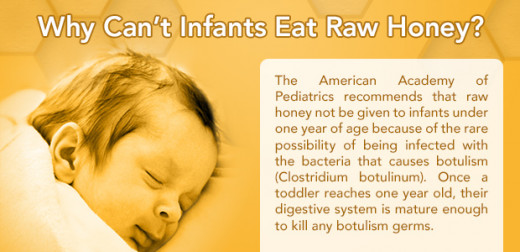
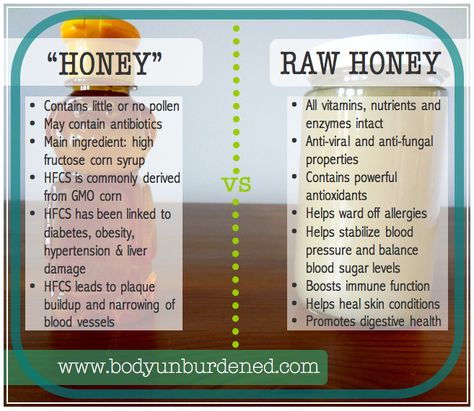
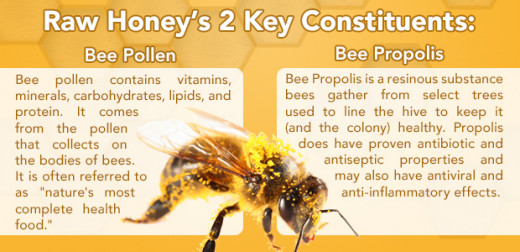
How about you?
Do you use honey and cinnamon
Cinnamon and Honey Paste on toast for a tasty healthy Breakfast.
